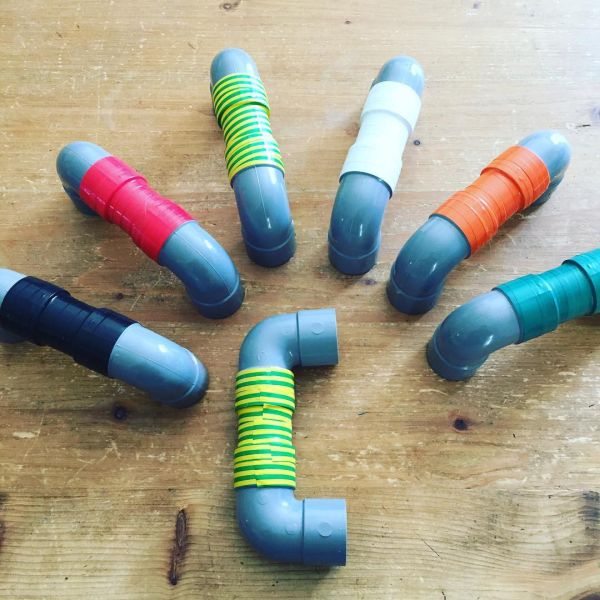 Theory of Stuttering – Blog
Theory of Stuttering – Blog
In my Blog post from November 2018 pre-speech facilitation of excitability in the motor cortex which was found to be lacking in adults who stutter by Whillier et al. (2018). I speculated that this pre-speech motor facilitation may be a coupling between speech motor programs and their anticipated sensory consequences, mainly in the auditory modality. Normal speakers seem to expect to hear something when they start speaking. This linkage between a speech motor plan and the anticipation of its immediate and simplest auditory consequence – that there will be something to hear – seems to be weak or absent in stutterers.
A paper recently published by Ludo Max and Ayoub Daliri points in a similar direction: “Limited pre-speech auditory modulation in individuals who stutter: data and hypotheses”. The authors review and interpret a series of studies investigating motor-to-auditory influences during speech movement planning in stutterers and fluent speakers. In these studies, they recorded auditory evoked potentials in response to probe tones presented immediately prior to speaking or at the equivalent time in no-speaking control conditions. As a measure of pre-speech auditory modulation (PSAM), they calculated changes in auditory-evoked potential amplitude in the speaking conditions relative to the no-speaking conditions.
Adults who do not stutter consistently showed PSAM, namely a suppression of the amplitude of the N1 component of the auditory-evoked potential, but this phenomenon was greatly reduced or absent in adults who stutter. The same between-group difference was, however, observed also in conditions where participants did not speak, but only heard their prerecorded speech played back. The authors conclude that “the lack of PSAM in adults who stutter is likely not a result of inefficient or incorrect motor command planning but of inefficiencies in the forward modeling of future auditory inputs” (3074). They assume a general auditory prediction deficit in adults who stutter.
Max and Daliri hypothesize that PSAM plays a role “in engaging or even enhancing processes involved in sensory feedback monitoring” (3074), They assume that “different phases of auditory modulation during speech planning may reflect ongoing neural processes involved in priming and selectively biasing the auditory system for its role in monitoring auditory feedback during speech production” (3075). However, the occurrence of this modulation even in the listening task shows that PSAM is not depending on speech planning; it is not (only) a ‘pre-speech’ auditory modulation, but may rather be a modulation of the sensory system in anticipation of an acoustic stimulus – not especially in anticipation of a speech stimulus, as there was no difference between the N1 suppression after the non-speech stimulus (short peep tone) and after a short speech stimulus (/da/ syllable) in an experiment with normal fluent speakers.
I think, instead of ‘modulation of the sensory system’, we can also say: modulation of attention allocation. In anticipation of a relevant acoustic stimulus, more attention (perceptual and processing capacity) is directed to the auditory channel, which facilitates the processing of auditory information. Particularly the processing (comprehension) of speech is very limited without attention to the auditory channel (Cherry, 1953; Hugdahl et al., 2003; Jäncke, Mirzazade, and Shah, 1999; Sabri et al., 2008 – and what is true for the processing of speech of someone else might also be true for the processing and monitoring of the auditory feedback of one’s own speech. Therefore, the assumption that PSAM reflects a modulation of attention is in line with Max and Daliri’s hypothesis that PSAM plays a role in enhancing processes involved in auditory feedback monitoring.
The assumption that PSAM is a modulation of attention is further suggested by results of studies in which deficits in the control of attention were found in children and adults who stutter – see, e.g., the meta-analysis by Doneva (2019) and Section 2.8.1 in the main text of this website. Deficits in the orienting network (e.g., Eggers, 2012; Rocha, Yaruss, and Rato, 2019) and in attentional shifting (Eggers and Jansson-Verkasalo, 2017; Heitmann, Asbjørnsen, and Halland, 2004) are of particular relevance in our context. I think we can interpret the lack of PSAM in stutterers as a deficit in the control of attention.
Max and Daliri hypothesize a causal relationship between the lack of PSAM and stuttering. They write: “As a current working hypothesis, we speculate that stuttering individuals’ limited use of auditory prediction to prime the auditory system prior to movement onset may result in an inefficient use of auditory feedback during speech production.[...] For the production of complex multisyllabic words and sequences of syllables combined into complete utterances, [...] feedback monitoring and feedback-driven corrections may play a role of greater importance. During such longer speech sequences, not appropriately modulating the auditory system for its role in feedback monitoring may lead to unnecessary and disruptive attempts at correcting ongoing movements, and such repairs may contribute to the fluency breakdowns that form the primary symptoms of stuttering.” (3080)
I agree with this hypothesis. It is close to my own theory – see Figure 7 in the main text and replace ‘misallocation of attention’ by ‘lack of PSAM’. However, those “unnecessary and disruptive attempts at correcting ongoing movements” hypothesized by Max and Daliri – what could it be? I think, it is not about the online correction or adaptation of physical features of speech like loudness, pitch, or timing. Experiments in which physical features were manipulated in auditory feedback showed that the response of stutterers was weaker on average than that of non-stuttering controls (e.g., Bauer et al., 2007; Cai et al., 2012; 2014; Daliri et al., 2018). Furthermore, it is unclear why any online adaptation, if occurring, should cause an interruption of speech flow. Therefore, I do not assume that unnecessary online corrections cause stuttering.
There is, however, a sort of errors that are corrected ‘offline’,i.e., after an interruption of speech flow. These errors are real speech errors, particularly mispronounced words and grammar errors. In the case of simple phonological errors like that mentioned above (not in the case of semantic errors), the interruption of speech flow may be automatic and independent of the speaker’s will (see this blog post about the debate of this issue). A deficient or disrupted processing of auditory feedback may result in invalid error signals of a kind similar to a phonological error, such that the monitoring system responds with an interruption of speech flow (see Section 2.1) in the main text.
Can this theory be tested? Stromsta (1959) obtained short blockages of phonation in normal fluent speakers by phase shifting of the auditory feedback (such that bone-conducted and phase-shifted air-conducted feedback canceled each other out). Perhaps, these blockages can be interpreted in the way that the monitoring system responded to a gap in auditory feedback with an interruption of vocalization. It may be fruitful to replicate and further elaborate this kind of experiment. Stromsta demonstrated the effect only during sustained vocalization of vowels and voiced consonants; perhaps it can be shown also in connected speech.
Max and Daliri also tested the effect of delayed auditory feedback on PSAM. Importantly, participants could expect the DAF: after the first few trials in the DAF condition, they knew that they would always hear their own speech with a delay. DAF (100ms delay) normalized PSAM in the stuttering group; there no longer was a between-group difference in this condition. Interestingly, the effect differed between the groups. Most of the nonstutterers showed less PSAM with DAF than with normal auditory feedback, most of the stutterers showed an increase in PSAM with DAF.
The authors hypothesize that it was the expectation of DAF which led to the activation of the processes responsible for PSAM in the stutterers. I totally agree with this assumption. As is well known, DAF usually improves the speech fluency of stutterers. In Section 3.8.1, in the main text, I propose a unifying explanation of most fluency-inducing conditions, including DAF: they all modulate the allocation of the speaker’s attention by drawing more attention to the auditory channel, which improves the processing of auditory feedback. This is consistent with my above assumption that PSAM modulates the allocation of attention in the same way.
In further research, the effect on PSAM of other fluency-inducing conditions, e.g., chorus reading, paced speech, or singing should be investigated – conditions in which participants expect to hear the voice of a co-speaker or the beat of a metronome, or in which they are required to meet a melody, i.e., an acoustic anticipation. Likewise, the effect on PSAM of other acoustic anticipations could be tested: speaking in a very high or low pitch, in the voice of another person, in an unfamiliar dialect, with noise, etc.
If PSAM biases the auditory system for its role in the monitoring of auditory feedback, then one would expect a correlation between PSAM and auditory-motor adaptation. This was tested in a speech task with frequency-shifted auditory feedback. As expected, adults who stutter showed both less PSAM and less auditory-motor adaptation as compared with normal fluent controls. Across individual participants, however, PSAM and auditory-motor adaptation did not correlate in the control group and were negatively correlated in the stuttering group: “participants who stutter and showed more PSAM showed less auditory-motor adaptation. […] ...limited PSAM is not directly related to limited auditory-motor adaptation at the level of individual speakers” (3077).
In this experiment, PSAM and auditory-motor adaptation were assessed in two different sessions: PSAM was assessed in tasks with unaltered auditory feedback. Auditory-motor adaptation was investigated in a series of 30 blocks of 3 trials (5 practice blocks included). In each trial, participants produced a word (presented as a picture); in the second trial of each block, auditory feedback was frequency-altered. Thus,after the practice blocks, participants could expect the frequency-altered auditory feedback (FAF) in the second trial of each block. It may therefore be that the expectation of FAF had a similar but weaker effect as the expectation DAF in the experiment mentioned above: It caused some some modulation of the sensory system (PSAM was not measured in this study) in a subgroup of the stutterers – in those who showed some degree of auditory-motor adaptation.
But why did just this subgroup show the smallest or no PSAM with unaltered auditory feedback? This subgroup may have a higher threshold for PSAM, but once the threshold is reached by a sufficiently strong stimulus (e.g. FAF), then their attention is drawn to the auditory channel and adjusted to the processing of auditory feedback. Thus, auditory-motor adaptation may be better in this subgroup than in other stutterers whose problem is not a high threshold but an overall rigid or sluggish attentional system: They show some PSAM even with normal auditory feedback, but FAF has less impact on it and does not cause further modulation. This subgroup would then show the smallest auditory-motor adaptation.
If the lack of PSAM (in some way) causes stuttering, then one would expect that PSAM and the frequency of stuttering are correlated negatively. However, Max and Daliri did not find a statistically significant correlation between PSAM and stuttering frequency with normal auditory feedback. Moreover, PSAM in the DAF condition was positively correlated with stuttering frequency. These results seem to contradict the hypothesis that the lack of PSAM (in some way) causes stuttering. But also here, higher thresholds for PSAM in stutterers can provide an explanation.
Assume that (1) a subgroup of stutterers has a high threshold for PSAM, but the expectation of DAF is a sufficiently strong stimulus which causes PSAM even in these individuals. Assume (2) that attentional shifting in these individuals, if occurring, may be more radical then in milder stutterers (whose attention system may be more rigid in general and less influenceable by DAF) This could explain why participants with a high frequency of stuttering showed the most PSAM in anticipation of DAF.
This speculation is supported by the following consideration: If the lack of PSAM (in some way) causes stuttering, then those who showed both, higher stuttering frequency with normal auditory feedback and greatest PSAM with DAF should also show the greatest reduction of stuttering with DAF. Stuttering frequency with DAF was not measured by Max and Daliri, but there is some evidence that the fluency-enhancing effect of DAF and of altered auditory feedback in general is greater in more severe than in mild stutterers (Foundas et al., 2004; Ham and Steer, 1967; Lincoln et al., 2010).
A possible explanation for the lack of correlation between PSAM and stuttering frequency with normal auditory feedback could be a follows: The modulation of the sensory system may be delayed in not a few stutterers; they lack PSAM with normal auditory feedback, but the adjustment of the sensory system to the monitoring of auditory feedback becomes better once they hear their own voice which may be a stronger stimulus for attentional shifting to them than auditory expectation. Because they lack PSAM, they stutter in the initial portion of utterances or sentences, but their speech is more fluent in the middle and at the end of sentences. This distribution of stuttering events is very prevalent, and the overall frequency of stuttering may be lower in these individuals despite the lack of PSAM. This would explain the lack of a statistical correlation between PSAM with normal auditory feedback and stuttering frequency.
In December 2018, I wrote here about the toobaloo, a simple toy for children that improves the perception of the auditory feedback of speech. The commercially available toobaloo is made for children and a bit too small (too short) for adults. Thus I considered how to make a larger one. In a DIY market, I found some wastepipe components suitable for putting them together to a toobaloo for adults, for example, as a cheap aid that can reduce stuttering during telephone conversation. Several of my stuttering friends have tested the wastepipe toobaloo with different results, but some of them are enthusiastic.
Initially I believed I would have invented the wastepipe toobaloo – but far from it: In France, not a few teachers have made suchlike self-made toobaloos for their students in order to help them improve their speech and reading abilities. The photos below show French self-made toobaloos for children. See, for example, also this website: instahu.net/tag/toobaloo,






The toobaloo is so well known in France probably because of the work of Alfred Tomatis, a French ENT physician (1920–2001) who ascribed several developmental disorders, among them reading disability, autism, and stuttering to an auditory processing disorder. His theories have always been controversial and may in detail no longer be accepted as scientific today, but his basic ideas about the importance of auditory perception may still be right.
Unfortunately, a scientific study of the effect of the toobaloo on stuttering has not yet been conducted. There is, however, a study of the fluency-enhancing effect of another toy, namely of the “echo mic” which generates an echo in a simple mechanical way (without current) when someone speaks into it. In the following short video, first the toobaloo and then the echo mic is shown.
The effect of the echo mic – technically correct: of a passive resonator – was investigated by Stuart, Miller, Kalinowski, and Rastatter (1997). Eight participants (seven adults and a teenager) who stuttered read two passages, one with and one without the echo mic (Playskool Model Music Microphone 312). The device included a diaphragm, spring , and resonator housed in a plastic outer shell. Participants were instructed not to use any strategies or techniques to control or reduce disfluencies during the experiment and to speak at a normal loudness and rate.
Five adults and the adolescent showed a reduction in stuttering frequency while the remaining two adults showed no change. The mean values for stuttering frequency for the control and resonator conditions were 33.4 and 24.1, respectively. Stuttering frequency was reduced by approximately 30% in the resonator condition – a statistically significant reduction. The authors conclude that “these and similar inexpensive commercially available devices may be employed with individuals who stutter, particularly children, as a means of enhancing fluency both within and outside the therapeutic environment. Employing a toy may increase a child’s engagement or participation in the therapeutic process.” (p. 1345)